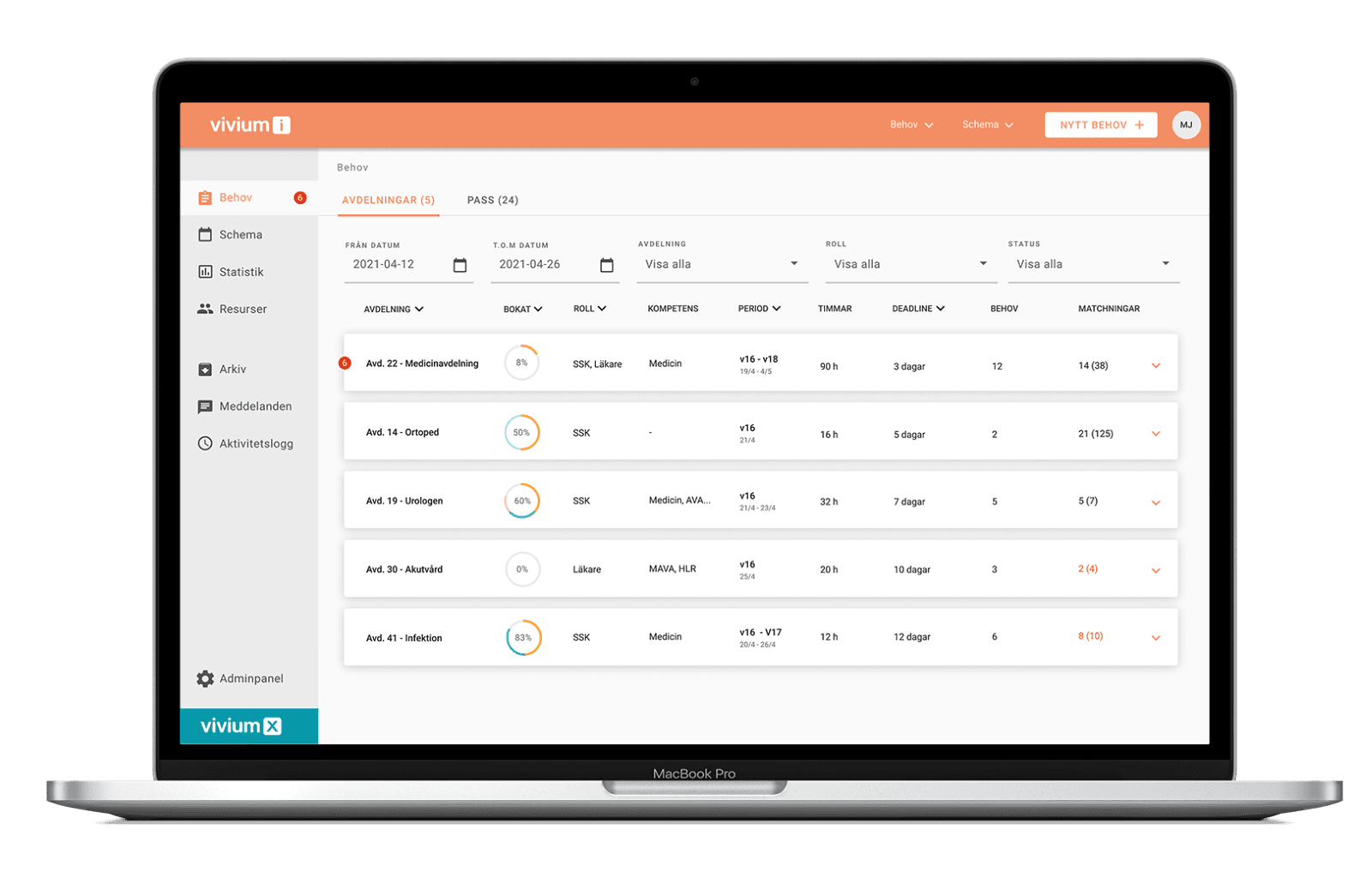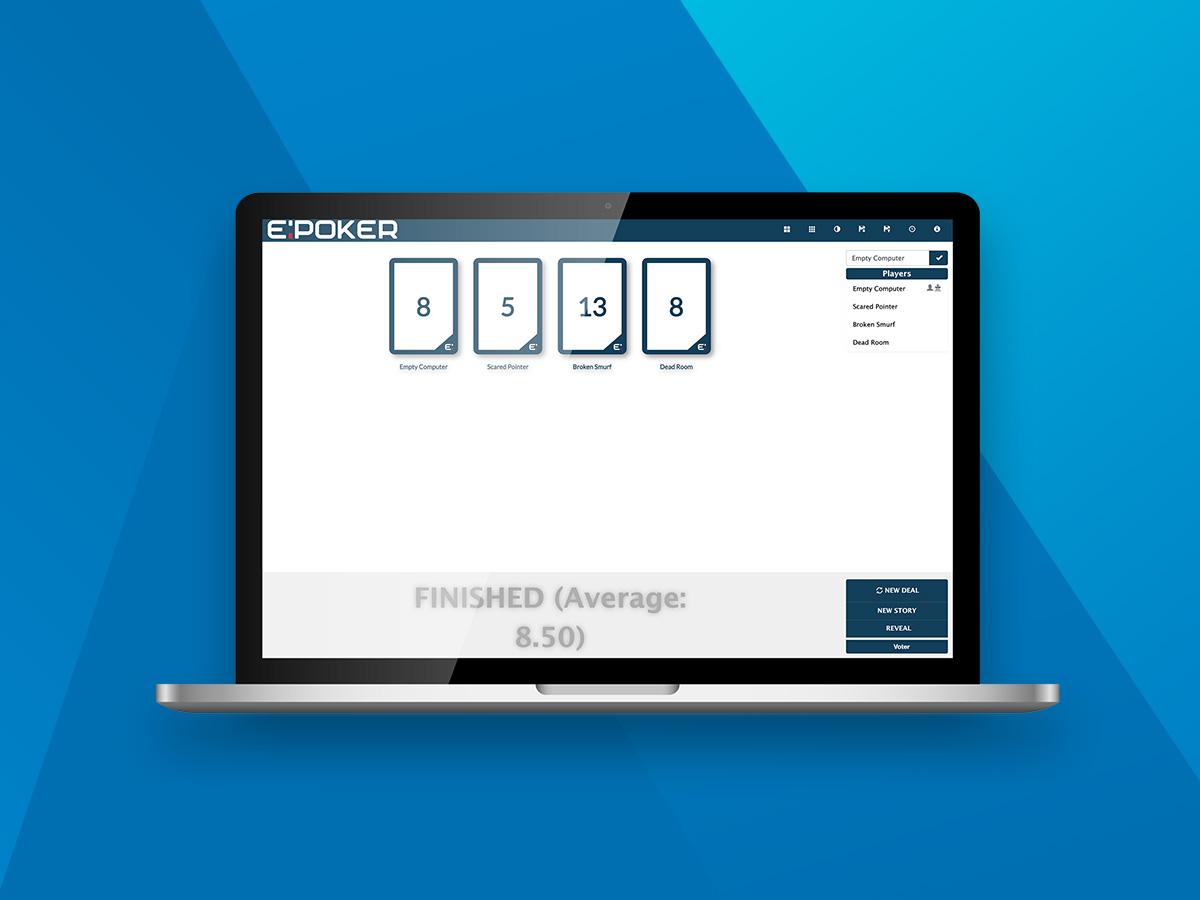Transformation of Healthcare Workforce Management
Comprehensive, cloud-based platform automating and streamlining workforce planning processes and staff management.


Vivium specializes in medical staff recruitment and, together with leading players, has created a secure and efficient platform for sustainable healthcare employment.
Client:
Vivium
Industry:
Healthcare
Country:
Sweden
Service:
Software Development
Team:
DevOps, Scrum Master, Automated/Manual Testers, Back-end Developers, Full-stack Developers, Front-end Developers
Challenge
Traditional methods employed in healthcare, including email correspondence, SMS group messages, Excel files, and sticky notes, resulted in administrative disarray and impeded healthcare professionals from dedicating their focus to patient well-being.
Ultimately, inefficient administration contributes to an unhealthy work environment and lower quality of care. That is why Vivium aimed to modernize and streamline these manual procedures through a scalable workforce planning and efficient personnel management platform for healthcare service providers.



Solution
In regard to cooperation, the system was created, consisting of two consumer applications (Vivium I and Vivium X), an administrator panel (Vivium Admin), and a server application (Vivium API).
Vivium API – serves as the gateway for client applications, offering access to essential functions like notifications, organizational control, user authentication, and more by means of its server application interface.
Vivium I -streamline the planning and resource management of healthcare and social care personnel in healthcare facilities. It offers a user-friendly interface customized to suit the specific requirements of organizations and users, allowing for efficient resource allocation. Additionally, Vivium I offers instant updates on schedule adjustments and seamlessly integrates with Vivium X to meet the demand for external contract workers sourced from staffing agencies.
Vivium X – improve the planning, contract administration, and resource allocation for healthcare and social care professionals. It includes features for sourcing medical personnel from external providers, facilitating the connection between specialized service providers and healthcare institutions. Through this platform, both parties can efficiently communicate about staffing requirements, discuss collaboration terms, and accept proposals, ultimately addressing staffing gaps in healthcare facilities.
Vivium X and Vivium I both come with a chat feature that facilitates communication both within and across agencies. This feature streamlines communication, making it easy for swift and convenient information sharing. The entire system operates in real-time and is seamlessly integrated with notification mechanism.
Vivium Admin – The administrative panel of the system, allowing for new client onboarding, sending notifications, and managing static content.
We are very satisfied with our collaboration with Euvic. Right from the start, we have had good communication and a shared vision for the product. An advantage has been that in addition to the technical competence Euvic possesses, we have also gained a sounding board in the commercial parts. I would like to say that we have created something with Euvic that can be applied in any vertical that needs help with similar processes that we helped the healthcare sector with.

Peter Westerholm
CEO and Founder at Vivium
Impact
With Euvic’s help, two main modules were developed – Vivium I and Vivium X. Implemented solution successfully met the clients’ challenges, resulting in improved workforce management and operational efficiency. Healthcare institutions employing Vivium saw a remarkable 75% decrease in the time spent on administrative tasks.
Thanks to real-time alerts and effortless scheduling, they were able to promptly address staffing shortages and unexpected scenarios. Moreover, the cloud-based nature of the platform ensured accessibility from any internet-connected device, offering flexibility to healthcare workers.
Tools and Technologies
Frontend
React
Redux
Material-UI
TypeScript
Backend
Node.js
Nest.js
TypeORM
PostgreSQL
TypeScript
Summary
- Access to high-quality and cost-effective development and infrastructure teams.
- Operational cost savings through the implementation of a CI/CD pipeline.
- Streamlined and efficient development processes.

















